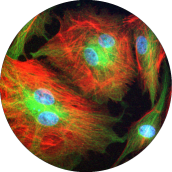Concepts and Overview
This page gives a high-level overview of how the SDK works and the general concepts involved in making and running apps.
The Basics

Apps on KBase, such as genome assemblers and annotators that run on narrative pages, are created using the KBase SDK.
When you run an app in a narrative, it runs in a docker container on KBase’s servers. Learn more about docker containers here: https://www.docker.com/what-container. Docker containers allow you to package and compile programs and dependencies, such as MEGAHIT , and run them anywhere.
As an SDK developer, you define your input parameter types, the packages and programs to run, and the output types, text, and HTML to show the user when the app finishes. To help facilitate development, a kb-sdk command-line utility is provided.
The Workflow
When a python SDK app runs in a narrative, it typically follows this workflow, which we’ll describe in more detail below.
User Input
In the first page of a narrative app, users have a set of form elements that can be customized to accept many kinds of data. An example might be a genome assembly algorithm that takes a dataset of DNA reads and a minimum kmer size.
As an app developer, you can configure the elements of the form using a wide range of options. For parameters that refer to larger data sets, such as genomes, these will be passed into your app as references, which you can think of as simple URLs used to download the actual files.
App Code and Data Management
Input from the app’s form is converted into a python dictionary and passed into a main method in your app. Typically, apps will perform a set of validation checks on the input to make sure everything is well-formed before running any algorithms.
From here, you can call out to utilities, run binary programs, and work with the file-system.
Output and Reporting
When an app finishes producing data, it will typically form a KBaseReport object that can contain a number of different things:
A formatted HTML page showing results
Links to files, such as PDFs, CSVs, etc. that your app produced
Links to saved, typed output objects, such as annotated or assembled genomes
Simple text messages and warnings about the results
Command-line Interface
A command-line interface, called kb-sdk, is provided to make it easy to initialize, validate, compile, and test your app.
Docker
The KBase SDK makes extensive use of Docker containers. The apps themselves run inside custom Docker images. The CLI, kb-sdk, also runs within a Docker container.
Using docker as the basic modular unit allows apps to run in different environments using custom dependencies. Also, apps written in different languages can use each other as dependencies.
Composing apps
Your app can install and use other KBase apps as dependencies, such as KBParallel. Find these apps in github at https://github.com/kbaseapps or in the KBase app catalog.
When you install and run another app within yours, the other app runs in its own, separate docker container. SDK apps are also installed and tracked separately from any python dependencies that you install via pip or other package managers.
KBase Types and Parameters
All of the data on KBase is strongly typed using an interface definition language called KIDL . This allows KBase to better cross-reference data, make inferences, and check app-to-data compatibility.
Configuration files in your app are used to define what parameters your app can accept and what kind of output it can return.
Working with files and data
Scratch
Since SDK apps often run inside multiple docker containers, you have to store files in a special location that all containers have access to: scratch. Scratch is set to a directory running inside your app’s docker container and is accessed from a special configuration variable in your app source code. This scratch directory is accessible to your app as long as it’s running.
Scratch is ephemeral – any files in the scratch directory are gone when your app stops running. To save files persistently (for example, to use in your report), you need to use Workspaces
The Workspace
The “Workspace” is the term used for the file storage servers used by KBase. For Python SDK apps, you can use apps such as DataFileUtil, AssemblyUtil, and GenomeFileUtil to download and upload files to the workspace.
In general, you always want to use the workspace for any datasets you work with if you want them to be available to your users in the narrative.
A dataset stored in the workspace is referred to as an object. Objects in the workspace have some special properties:
Every object conforms to a type specification.
Objects are versioned
The “reference” for an object has the format
workspace_id/object_id/version.Workspaces are authenticated
The Catalog
KBase’s catalogs are registries of KBase apps. In order to find and use an app from within a narrative, it has to be registered in one of these catalogs. You can manage an app’s registration from its module page on the KBase website.
There are three separate catalogs for testing purposes: dev, beta, and release.
dev: Prototype and tweak your app within the narrative
beta: The app is ready for release but requires testing
release: The app is visible to normal KBase users
Publishing
You can register a new app from this page: https://appdev.kbase.us/#appcatalog/register
Once you do so, it will be available in the dev catalog. This catalog is meant as experimentation grounds for new apps. When you’re searching for apps, you need to be sure to filter by the development catalog to view your dev app.